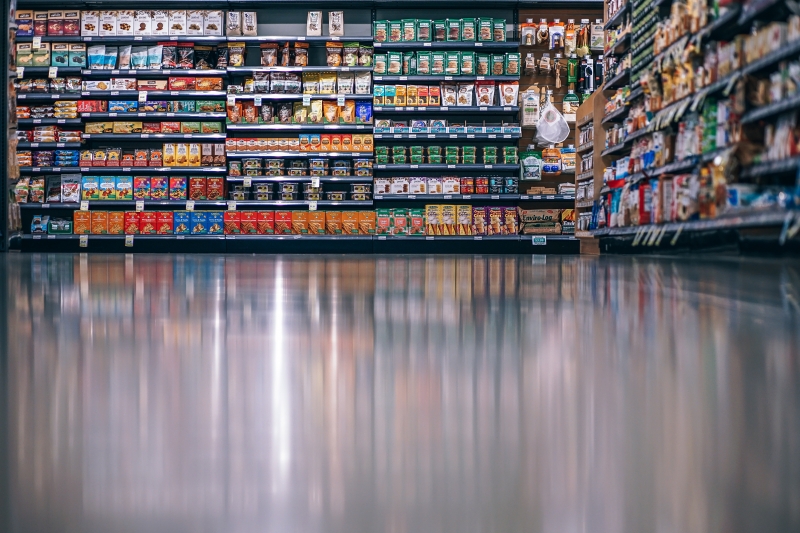It’s well known that up to 40% of food in the United States goes to waste. As a result, a large portion of the blue water utilized in agricultural irrigation ends up back in the ground—not in aquifers, but in landfills. While the majority of food waste in the United States is attributable to the disposal of safe, edible foods, a considerable amount of food that goes to landfill is “lost” due to spoilage or food being otherwise deemed unfit for human use.
Innovative food packaging is emerging as an effective strategy for minimizing the amount of food that deteriorates prior to consumption, primarily by preserving perishable food and extending its shelf-life. Research by packaging expert Gordon L. Robertson indicates that packaging has the potential to protect almost all of the energy utilized in the growth, processing, and transport of the food. Because packaging generally requires fewer resources to produce than the actual foodstuff, the environmental impact of the package is small relative to the food contained within it.
 To capitalize upon the preservation benefits of packaging, numerous companies are integrating smart systems into their packaging designs. These new generations of “active” and “intelligent” packaging include bio-technologies that will increase consumer knowledge about food quality, thereby decreasing loss and waste.
To capitalize upon the preservation benefits of packaging, numerous companies are integrating smart systems into their packaging designs. These new generations of “active” and “intelligent” packaging include bio-technologies that will increase consumer knowledge about food quality, thereby decreasing loss and waste.
Intelligent packaging employs technologies like time and temperature indicators (TTI) that can monitor the temperature of the food and show when it is no longer suitable for consumption. These TTI technologies—which are commercially available from companies such as Freshpoint—offer a low-cost solution to food wastage by utilizing color-changing labels to reveal when the temperature inside the package has reached an unsafe level.
Active packaging, on the other hand, aims to prolong shelf-stability by harnessing technologies that can regulate the temperature and atmosphere inside the package, ensuring that the food is well-maintained. Multisorb Technologies, for example, manufactures FreshMax Oxygen Absorbers, which inhibit mold growth.
Despite the benefits of advanced technology systems, packaging still relies upon fossil fuels for production. As such, the food industry is considering bio-based plastics as a potential solution, which offers a greener method of sourcing that utilizes feedstocks and fermentation, rather than petroleum, for production. Because this bio-plastic is sourced from organic materials such as corn, lactic acid, and vegetable oil, much of it can, in theory, be composted in specialized facilities. In addition to reducing the carbon footprint of polyethylene production, bio-plastics may decrease the amount of plastic that ends up in our landfills and oceans.
However, the widespread distribution of these compostable plastics is still on the horizon, as scientists are working on ways to ensure that the plastic doesn’t degrade prior to product-use. And because the infrastructure required for this sort of high-temperature composting is not universal, companies are also engineering the bio-plastics so that they can be recycled conventionally.
While packaging clearly can reduce food loss, it is important to note that this reduction comes from packaging designed to protect the food item in production and transport (e.g., cardboard cartons). Single-serving items like coffee cups and to-go containers—which are used primarily for convenience—do not have the same environmental benefit of reducing food waste.
The exact percentage of food packaging that contributes to municipal solid waste is unknown, though studies estimate that nearly two-thirds of all packaging waste sent to landfills is attributable to food products. This figure reflects the country’s high consumption of convenience packages like soda cans, yogurt cups, and clamshells, which are produced and sold in abundance. A significant portion of these products may be recyclable, though studies by the Environmental Protection Agency suggest that the recycling rate in the United States hovers around 35%. While this number is similar to the European Union’s average rate of 39%, it suggests that the potential benefit of sustainable plastics may be undermined by the failure to recycle or compost the bio-plastics appropriately.
In recent months, food giants like Unilever, Mars, and PepsiCo have announced their intention to make all packaging recyclable, reusable, or compostable by 2025. While these companies have committed to “greening” their packaging apparatuses, so far, there has been little reduction in the volume of packaging used. Lowering the environmental impact of the materials themselves may therefore be an important strategy.
Although bio-plastics may reduce the carbon footprint of packaging, the feedstocks for bio-materials rely upon intensive resource and energy use in order to produce a sizeable yield. Even if recyclable and compostable materials become the industry standard, waste-processing facilities will likely require large infrastructure investments in order to recycle bio-materials.
The potential utility of active and intelligent packaging in reducing food waste is evident. Yet, questions remain about the environmental benefit of sustainable packaging. Does the development of bio-plastics create an incentive for companies—particularly distributors of convenient, single-use items—to simply transition to more recyclable and compostable products, rather than focus on reducing plastic use?
Further research is needed to explore these questions and assess the viability of bio-plastics as a solution to the environmental impact of food packaging waste. In any case, innovation in food packaging highlights the need for food producers and retailers to more closely consider sustainability in their business practices.
